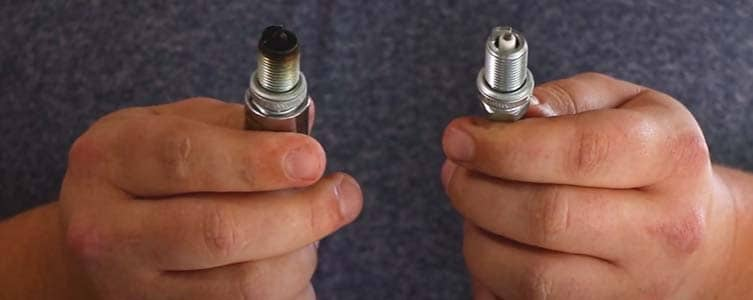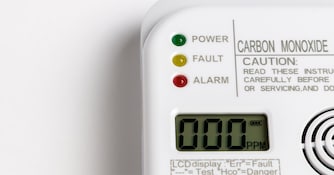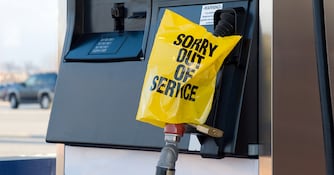
Generator Oil Guide
Many people we talk to think they bought a "lemon" when their generator seizes up after a few days of continuous running. Usually, the problem is just the result of low or no oil.
Like with your lawn mower and car, your generator oil needs regular changing to keep the internal parts lubricated and functioning properly. This is especially true when using the generator for longer periods such as during extreme weather.
When changing the oil, it also makes sense to check other components like your filters and spark plug. Keep reading to learn how to change the oil in your generator and other basic maintenance steps.
How Often to Change Generator Oil
The frequency of your generator oil changes will depend on the type of generator, usage, and manufacturer guidelines. The first place to check is your generator owner’s manual, which will provide detailed information on how often to change the oil.
If you’re looking for a general rule on generator oil change hours, most portable units require one after every 100-200 hours of use. Obviously, that period could go by fast if you’re running your unit continuously during a power outage. That’s why we recommend topping off the oil whenever you refuel and doing a full oil change before every 100 hours of use.
If your generator is brand new, the owner’s manual may tell you to change the oil after the first 25 hours of usage, known as the break-in period. After that, the 100–200-hour interval will begin to apply.
What Type of Oil for Generator?
Your generator's manufacturer will list the type of generator oil you need and the proper procedure guidelines to follow in the owner's manual. Still, it's a good idea to understand generator oil weight, or viscosity.
Viscosity refers to the thickness of an oil at a particular temperature and is indicated by a numbered weight on the bottle, i.e. 10W-30. The higher the first number, the more viscous the oil will be in winter.
Generally, running your generator in extremely cold temperatures will require a lower-viscosity oil, such as 5W-30, to ensure it will start. If your oil is too viscous during winter, the cold will make it thick, and it won't move around the engine well. By contrast, in extremely hot temperatures, you should use higher-viscosity oil.
Below is an example chart from a manufacturer's owner's manual. Refer to your manual to find the recommended oil to use because, in some cases, you may need synthetic or semi-synthetic oil.
![[Recommended Oil Based on Temperature]](https://www.electricgeneratorsdirect.com/images/607_egd_infographic.jpg)
How to Change Oil in a Generator
Changing the oil in a generator is a fairly straightforward process. Although you should follow the specific instructions in your owner's manual, here are some generalized steps.
- Disconnect the battery cable from the generator as a safety precaution.
- With an oil pan underneath, locate and open the drain tube or plug near the bottom of the motor. The oil will start dripping onto the pan. CAUTION: Do not do this right after running the generator as the oil will be very hot.
- Once all the oil has drained, close the drain.
- Locate and open the oil filler tube and, using a funnel, add the correct amount of oil according to manufacturer specifications. Typically, the oil should rise to the threadline of the tube. Use a dipstick to measure the oil level. Generator oil capacity will vary based on manufacturer and model.
As you can see, changing generator oil isn't particularly difficult. Just remember to check the oil levels, preferably before each use, with a dipstick to make sure you have enough at all times.
Related Maintenance
As mentioned, if you're going through the trouble of changing the oil, you might as well check out these other components.
Change the Oil Filter
Your generator's oil filter keeps dirt and debris out of the oil. Before inserting the replacement, lightly lubricate the oil filter gasket with fresh oil for optimal operation.
Maintain the Air Filter
Though it is recommended to replace your air filter, to clean your current air filter, wash in soapy water and dry gently in a clean cloth. Use caution, or else you might tear the filter and render it useless.
Check the Spark Plug
Check your spark plug after continued generator use as stated in the owner's manual. In extreme conditions, you may want to check it more often. Inspect the spark plug by taking it out after the engine has cooled. This will also give the engine a break after heavy-duty running.
If it's dirty, clean it by lightly agitating with a wire brush, then check the gap, and replace it using a torque wrench. If it's so dirty that you can't clean it effectively, replace it with a new one.
Note: overtightening a spark plug can strip the threads, or break the porcelain insulator and cause irreversible damage to the engine.
Preparing for the Worst
Oil is the lifeblood of your portable generator, so it's important that you keep it filled and fresh, especially during periods of heavy use. Remember, these are generalized tips. For specific oil information on your particular generator, consult your owner's manual. Lost it? We may be able to help.





